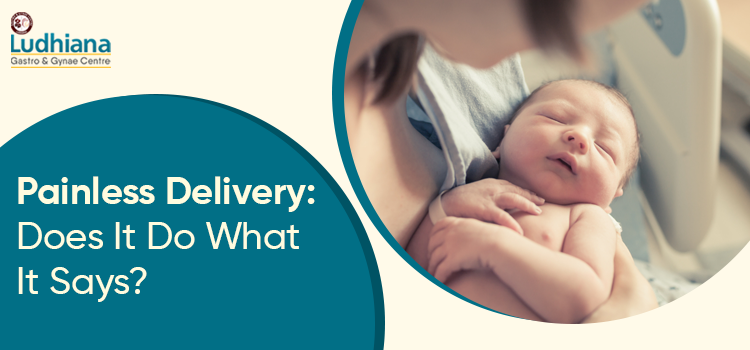The beginning of a great journey is becoming a mother. With the arrival of your bundle of joy, the incredible bond you have enjoyed with your unborn child for the past nine months comes to a head. However, the birthing process that occurs when someone crosses over is frequently terribly painful. New women frequently experience fear during natural birth. Although an elective C-section was previously the only option, modern science has made some ground-breaking strides that may help reduce labor pain to a manageable degree. Epidural analgesia, sometimes known as painless birth, is only an option for regular deliveries.
What is Painless Delivery?
It is possible to have a painless birth by using a form of localized anesthesia that reduces discomfort during natural labor. The mother’s lower back is injected to administer the epidural anesthetic. It takes the drug 10 to 15 minutes to begin working. For women who would otherwise opt for a C-section but have a lower pain threshold, this is a potential alternative.
How is anesthesia administered during an epidural?
While getting the epidural, you might have to sit still with your back slightly arched. By putting a tiny tube into the lower portion of your spinal cord, the Painless Normal Delivery Doctors in Punjab will catheterize your lower back. To deliver epidural anesthesia during labor, the needle is taken out and the catheter is taped into place. When you are in active labor, your gynaecologist will give you an epidural, which numbs your pelvis and everything below it while you’re still conscious. You should be warned that it does not completely relieve pain, though.
The Benefits of an Epidural
- Women who have painless delivery have a chance to give birth naturally with only a few interventions. It has contributed to a decrease in the number of elective C-sections performed in India.
- A woman can choose to receive an epidural during labor if she believes she can’t manage the pain, is exhausted from pushing, or has an emergency that might need an urgent C-section.
- It enables the mother to concentrate on giving birth by reducing pain. It is a relaxing aid and can minimize the tiredness and irritability that most women experience during childbirth, lowering the likelihood of post-partum problems.
- It helps the baby descend naturally by relaxing the pelvic and vaginal muscles.
- It also helps to lower the mother’s blood pressure, which would otherwise rise during labor to riskily high levels.
Epidural Side Effects or Risks
- While obtaining an epidural is completely safe for both the mother and the unborn child, some people may feel fever, breathing problems, nausea, dizziness, back pain, and shaking.
- The new mother may experience severe headaches that resemble migraines as a result of some epidural leakage into the spine.
- The duration of labor may be extended if an epidural is used.
- The woman could develop urine incontinence following birth. Then, a catheter might be used.
- It may take some time before you can walk because it makes your entire lower body numb.
Conclusion: Using Entonox, which is nitrous oxide and oxygen delivered through a breathing mask, and water delivery are two additional options for painless deliveries. Many women have had wonderful natural birth experiences thanks to painless delivery techniques like epidurals. Only after carefully assessing the advantages and downsides and discussing the procedure with Painless Normal Delivery in Ludhiana should you decide to proceed.


